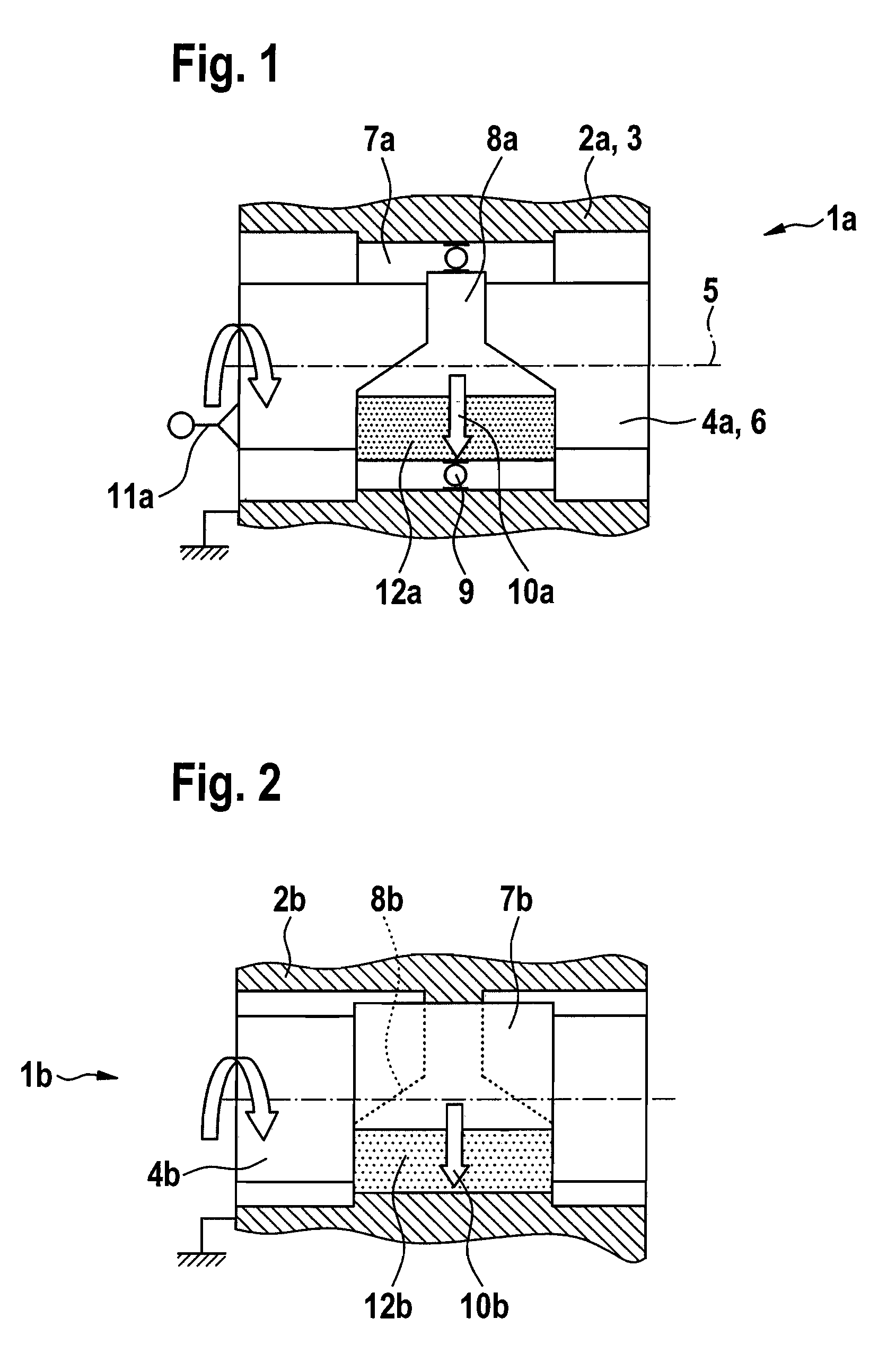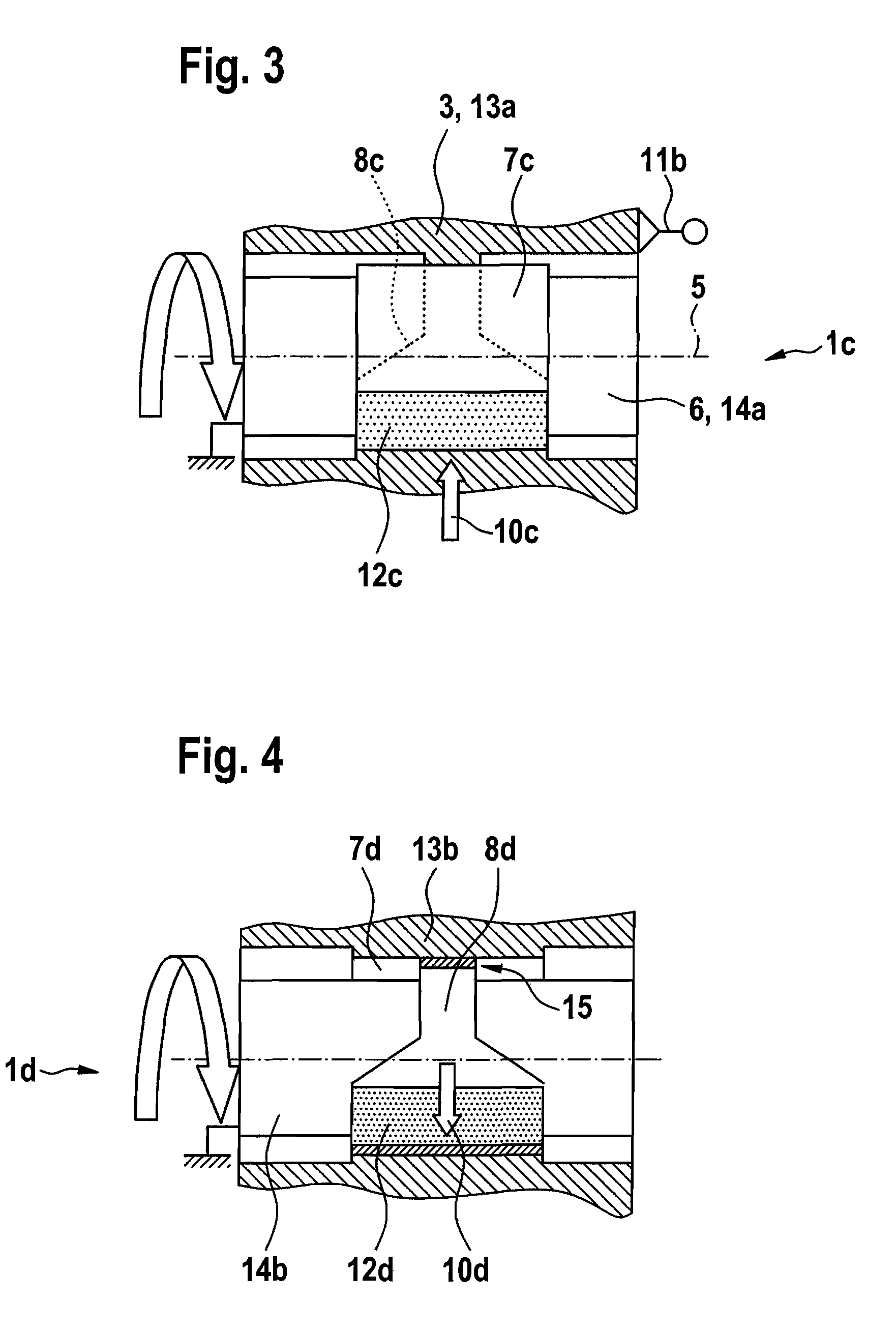Radial bearing
a radial bearing and bearing seat technology, applied in the direction of sliding contact bearings, mechanical equipment, machines/engines, etc., can solve the problems of unsatisfactory both technically and financially, unsatisfactory fatigue strength of radial bearings, etc., to achieve high viscosity hydraulic means, reduce friction power loss, and reduce friction. the effect of the roller
- Summary
- Abstract
- Description
- Claims
- Application Information
AI Technical Summary
Benefits of technology
Problems solved by technology
Method used
Image
Examples
Embodiment Construction
[0023]In FIG. 1, a radial bearing 1a according to the invention for a first load case is disclosed. Shown is an outer part 3, which is formed as a housing 2a and in which the inner part 6 formed as a shaft 4a and rotating about a longitudinal axis 5 is mounted radially. In the illustrated embodiment, a roller bearing 9 is located between a bearing seat 7a formed in the housing 2a and a bearing seat 8a formed on the shaft 4a, which can also be used as the radial bearing 1b, 1c, 1d according to FIGS. 2-4 as a bearing means. A radial load 10a rotating with the shaft 4a leads to a peripheral load on the bearing seat 7a of the housing 2a due to an unbalanced weight 11a arranged on the shaft 4a, while the radial load 10a is generally stationary relative to the bearing seat 8a of the shaft 4a and a load zone 12a (shown with shading) constructed on the shaft. While the bearing seat 7a of the housing 2a is constructed rotationally symmetric due to the peripheral load, the bearing seat 8a of ...
PUM
 Login to View More
Login to View More Abstract
Description
Claims
Application Information
 Login to View More
Login to View More - R&D
- Intellectual Property
- Life Sciences
- Materials
- Tech Scout
- Unparalleled Data Quality
- Higher Quality Content
- 60% Fewer Hallucinations
Browse by: Latest US Patents, China's latest patents, Technical Efficacy Thesaurus, Application Domain, Technology Topic, Popular Technical Reports.
© 2025 PatSnap. All rights reserved.Legal|Privacy policy|Modern Slavery Act Transparency Statement|Sitemap|About US| Contact US: help@patsnap.com



